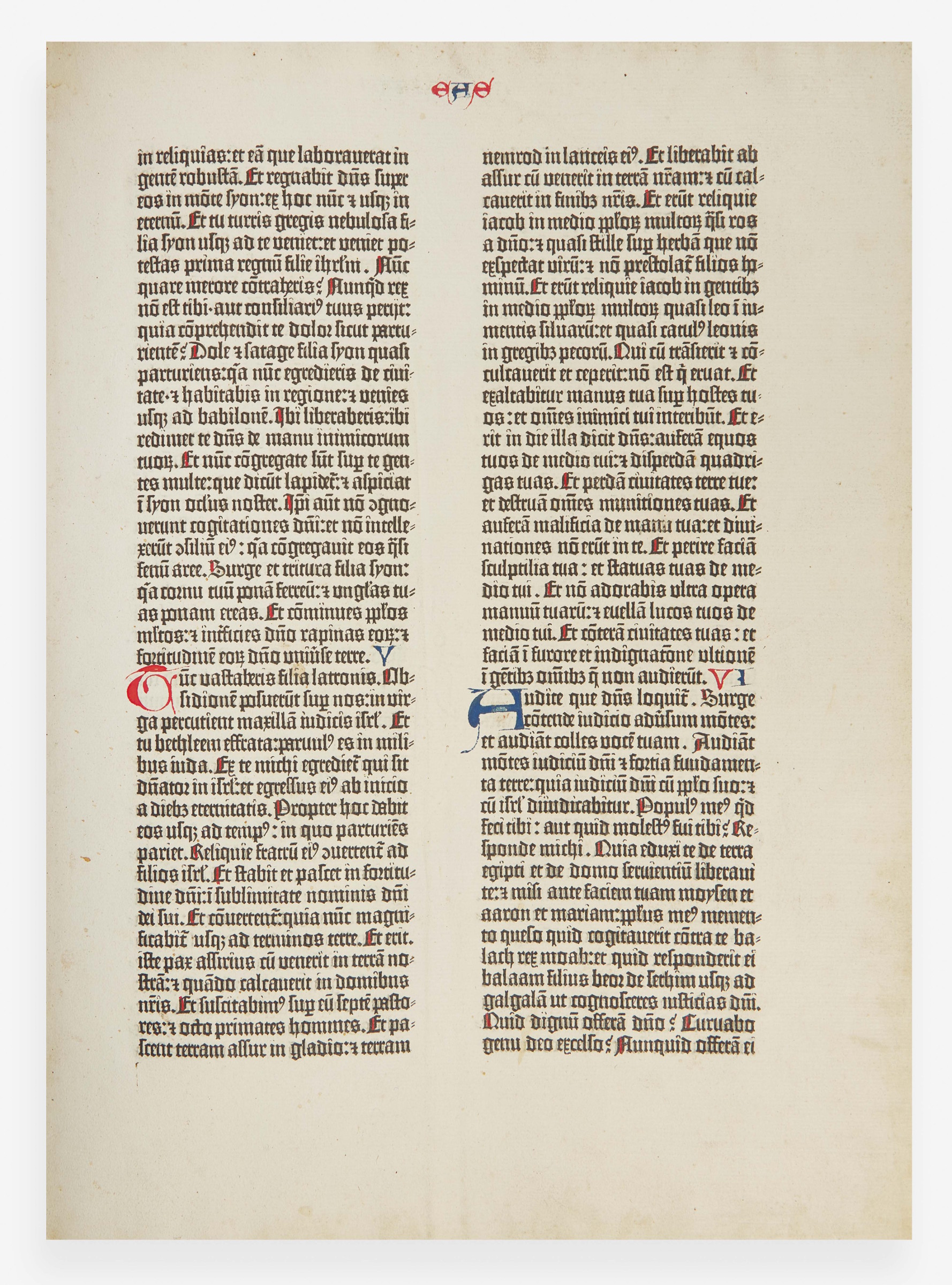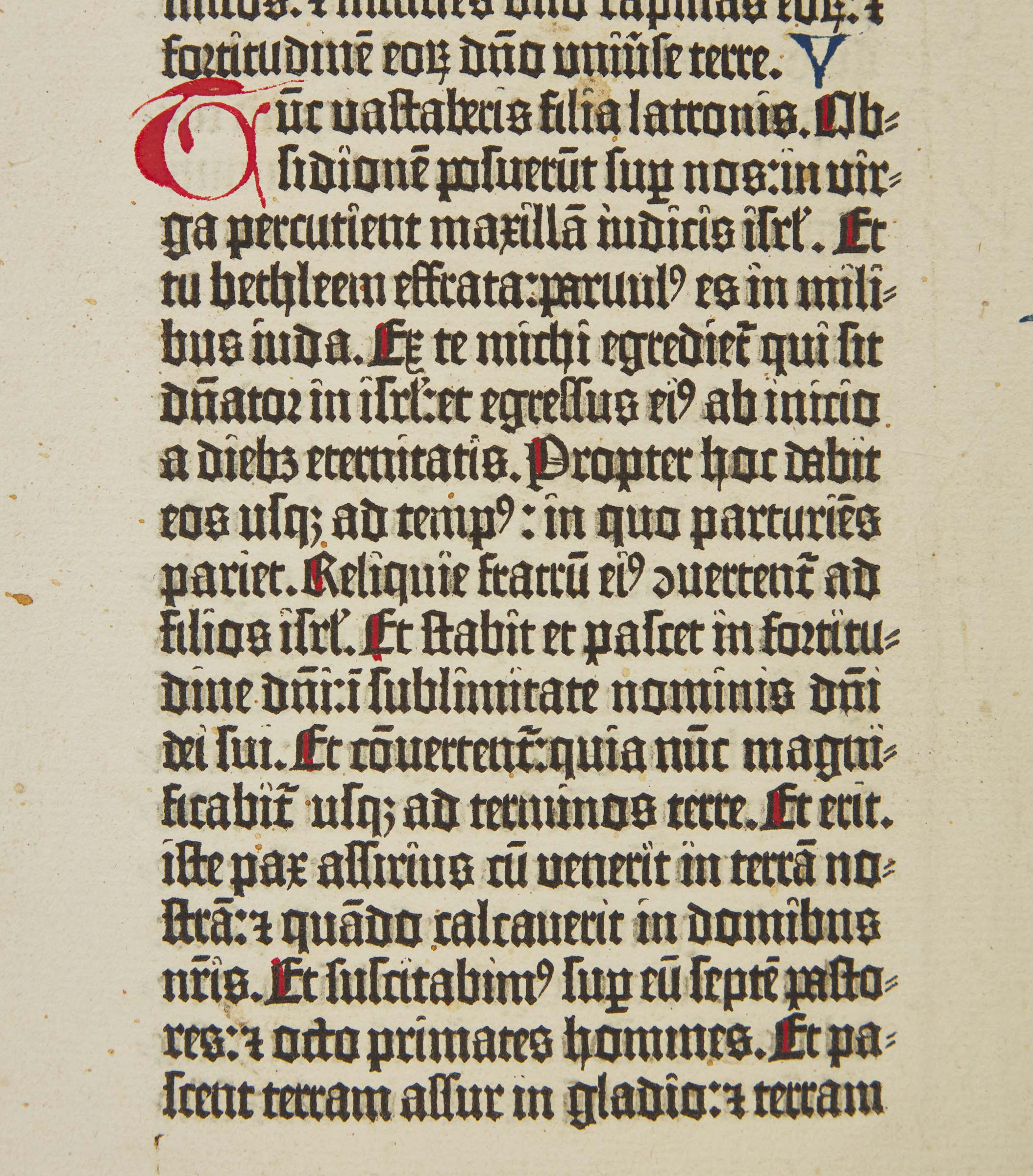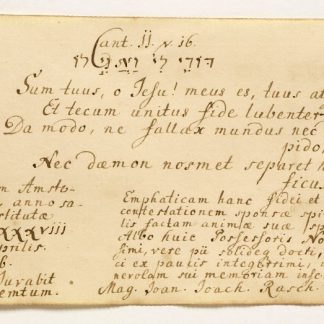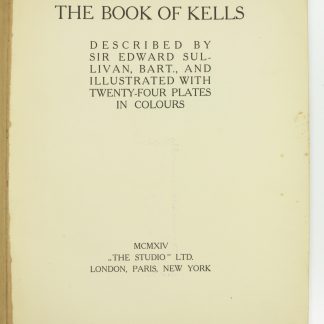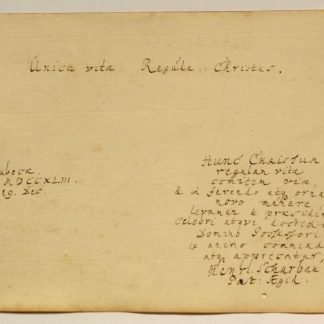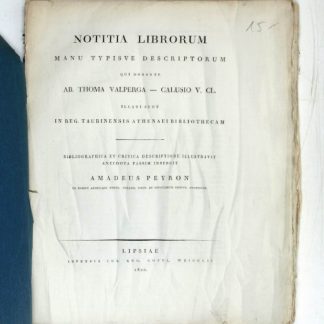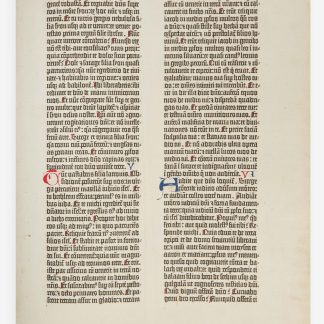A leaf from the Gutenberg Bible, printing Micah's messianic prophecy
A leaf from the B-42 Gutenberg Bible.
Folio (284 x 390 mm). Vol. 2, leaf q2: Micah, verses 4:7 to 7:18. 2 columns, 42 lines, Gothic type. Rubricated initials in red and blue; headlines and chapter numbers in alternating red and blue, capitals accented in red, section title in red and blue. Bound in full black morocco as one of Gabriel Wells's "Noble Fragments" (New York: Gabriel Wells, 1921).
$162,728.00
A leaf from the first book printed from movable type in the western world, featuring Micah's famous prophecy of the coming Messiah: "But thou, Bethlehem Ephratah, though thou be little among the thousands of Judah, yet out of thee shall he come forth unto me that is to be ruler in Israel; whose goings forth have been from of old, from everlasting. Therefore will he give them up, until the time that she which travaileth hath brought forth..." (5:2-3).
The Gutenberg Bible, also known as the B-42 in reference to the number of lines per column, was produced between the years 1450 and 1455 under the partnership of Johannes Gutenberg and his financial backer Johann Fust in approximately 180 copies - 150 on paper, 30 on vellum. Today, only 49 copies survive more or less substantially complete. Gutenberg's craftsmanship set standards "in quality of paper and blackness of ink, in design and professional skill, which the printers of later generations have found difficult to maintain; it is only in legibility of type that they have been able to improve on this, the first and in many ways the greatest of all printed books" (PMM). So rare is the B-42 that the slightest fragment is treasured, and the owner of even a single leaf will find himself in august company: of the 82 known holdings that are listed in the exhaustive Incunabula Short Title Catalogue, no fewer than 24 comprise just a single leaf or even fragments thereof; several other institutions hold two to four leaves.
This leaf originates from a severely defective copy formerly in the collection of Charles Theodore, Elector of Bavaria and the Palatinate. It was subsequently housed in the Bavarian Royal Library, from which it was purchased as a duplicate by the English traveller and diplomat Robert Curzon in 1832. In 1920 the volume was returned to the trade and acquired by the American bookseller Gabriel Wells, then dispersed as single leaves or larger fragments, intended for universities and schools as well as for private collectors. The individual leaves were mostly accompanied by a printed essay by the Philadelphia bibliophile A. Edward Newton, as here. Regarding the penwork decoration of this copy, Eric White notes: "The Noble Fragments are identifiable by their neatly executed alternating red and blue lombard headlines, smaller initials and chapter numerals. These were the work of a skilled artisan, probably working in Mainz, who also rubricated the Gutenberg Bible now at the Rylands Library in Manchester.”
1) Carl Theodor von Pfalz-Sulzbach (1724-99), Prince-Elector of the Palatinate and of Bavaria, and his wife Marie Elisabeth Auguste von Pfalz-Sulzbach (1721-94).
2) Court Library of Mannheim.
3) The Royal Library at Munich (soon after 1799).
4) Sold as a duplicate in 1832 to Robert Curzon, 14th Baron Zouche (1810-73), for ca. 350 fl.
5) By descent to Mary Cecil Frankland, 17th Baroness Zouche (1875-1965).
6) Sold on behalf of the Baroness at Sotheby’s, London, 9 Nov. 1920, Lot 70.
7) Frank T. Sabin (d. 1915), London, bookseller, acting for Gabriel Wells.
8) Gabriel Wells (1861-1946), New York, bookseller, acquired in 1921.
9) U.S. private collection.
10) U.S. trade.
Folio (284 x 390 mm). Vol. 2, leaf q2 (152) from the Old Testament, containing Micah 4:7 (... in reliquias et eam quae laboraverat) to 7:18 (Quis Deus similis ...). 2 columns, 42 lines, Gothic type. Rubricated initials in red and blue on recto, and in red on verso; headlines and chapter numbers in alternating red and blue, capitals accented in red, section title in red and blue. Watermark: Bull's Head and Star (manufactured near Caselle, Piedmont, ca. 1450). Bound as part of Gabriel Wells's "A Noble Fragment", with A. Edward Newton's essay "A Noble Fragment, Being a Leaf of the Gutenberg Bible 1450-1455" (New York: Gabriel Wells, 1921), in full black morocco (299 x 406 mm), stamped in blind and in gilt, by Stikeman & Co. of New York.
Insignificant marginal soiling to leaf. Binding very lightly rubbed at the extremeties.
H 3031*. Goff B-526. GW 4201. Hubay 47. Eric Marshall White, A History of the Gutenberg Bible (2017), pp. 132-136. PMM 1.

